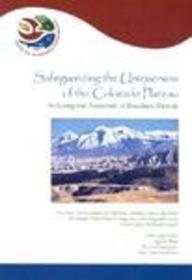

 |

|

The average rating for Safeguarding the uniqueness of the Colorado Plateau based on 2 reviews is 3 stars.
Review # 1 was written on 2012-09-18 00:00:00 Jenny Cassen Jenny CassenPicked it up for two bucks in a remainder heap. Enjoyable enough so far, but the author seems to be padding the story with a lot of unnecessary backfill - ie: retelling the Battle of the OK Corral and the Saint Valentine's Day Massacre. Still, it drew me in. Fans of historical "what-ifs" and of tough guy shoot-em-ups will not be disappointed. I felt the end could have been a little bigger, but it was definitely a page-turner and worth picking up. Steve |
Review # 2 was written on 2013-02-14 00:00:00 Stewart Jotham Stewart JothamIn 1920, seventy year-old Wyatt Earp travels from his home in Los Angeles to New York City to help Doc Holliday's son. Holliday won a veritable treasure at the poker tables--4,000 top-shelf bottles of pre-Volstead liquor--and it has attracted the unwanted attentions of Brooklyn gangsters like Johnny Torrio, Frank Yale, and Al Capone. Wyatt and his friend Bat Masterson owe it to the memory of Doc to strap on their pistols one last time and ride for a final adventure… I could not resist the fanciful pulp premise of this novel (Six shooters versus tommy guns!) even though part of me feared it would just turn out to be a shallow fish-out-of-water tale. I expected Wyatt to "aw, shucks" his way through confusion at modern technology, only to eventually best them bad-boy city slickers by bringing old-fashioned frontier justice to the mob. Instead, I discovered a well-researched historical novel. Famous figures like Texas Guinan, Damon Runyon, and Big Nose Kate Cummings wind their way through the story. While there is no evidence Earp ever visited New York in real life, nothing in this story contradicts the historical record. It could have happened this way. The author offers explanations how Capone received his famous facial scars and why he relocated to Chicago. (Most scholars think he moved before Prohibition actually went into effect, but Collins agrees with a minority of historians who place it in early 1920). The book shows Earp and Masterson as resourceful, adaptable men capable of changing with the times. Bat Masterson became a respected journalist and author. After Dodge City and Tombstone, Earp lived many years in Los Angeles working as a detective and Hollywood consultant. He was not surprised at the pace of industrialization nor the advent of technology. He understood politics, entertainment, and business. If anything, his experiences in two gold rushes made him uniquely capable of understanding the economics behind prohibition. Integral to the novel are flashbacks to famous events like The Gunfight at the OK Corral and the Saint Valentine's Day Massacre. The author separates fact from fiction, but also demonstrates how the legends took root and grew to influence the participants' reputations. The book also touches on the historical Irish vs. Italian organized crime wars, and Jewish gangster Arnold Rothstein's role as mediator and peacemaker. The only drawback to the story is its climax. There's an extended firefight in a warehouse, but it lacks tension because the historical record tells us neither Masterson and Earp died in 1920. The rest of the plot is resolved with an elaborate confidence set-up (ala The Sting) which is effective but easy to see coming. |
CAN'T FIND WHAT YOU'RE LOOKING FOR? CLICK HERE!!!